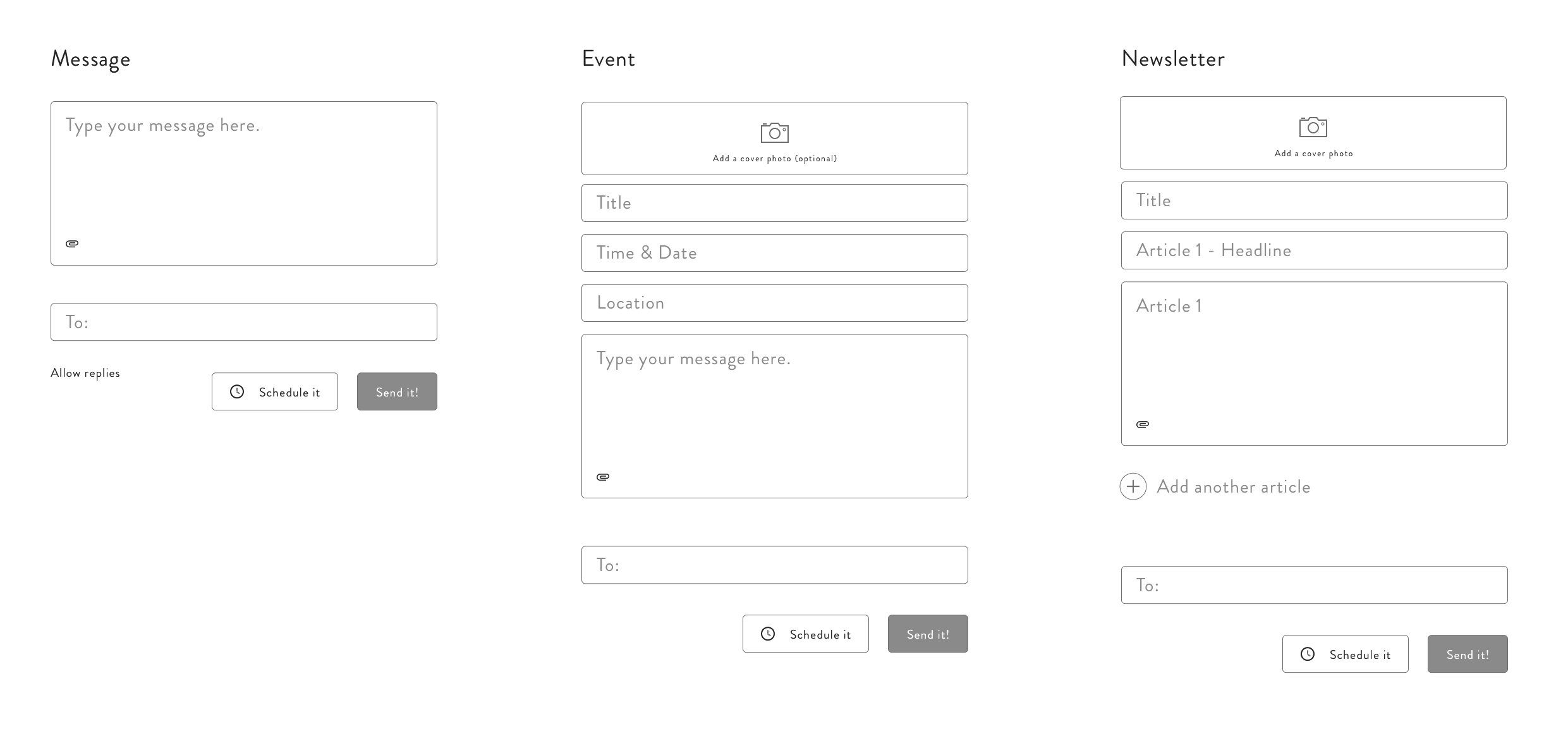Signal Kit
Role: Product Design Lead
Communication remains a pain point for K-12 education. With Signal Kit, we wanted to approach the problem from all sides while utilizing the latest automation and translation advancements.
Background
A local entrepreneur approached me to navigate a new direction with his education startup. The initial product offering was a mix between a school website and a Facebook feed. They quickly realized that schools still needed a traditional web presence and a Facebook page, so initial adoption was relatively low.
I loved the idea of improving education, and there seemed to be a real need in the market, so I decided to come on board.
Out of the gate, the owner began sending me various images from robust products to emulate. So, the first order of business was to clarify our goals.
I stressed that if we were looking for an effective solution, we couldn’t just build the kitchen sink; we needed to learn about the people using it.
Discussing the current product’s lack of adoption helped sell the case to initially focus on understanding users.
Research
So, we started interviewing the audience: teachers, parents, and administrators. We also brought on former district leaders as product advisors. Their input provided a wealth of knowledge and experience from an administrative perspective. Feedback from each group started shaping into some common threads.
Administrators:
“I’m paying for several outdated tools and still have no oversight into what my teachers are sending.”
Teachers:
“I just want something easy to reach parents.”
Parents:
“There are so many types of communication. It’s exhausting.”
From there, we started pulling together some user personas to measure against as we discussed what the solution should accomplish.
Our research also looked into the competitive landscape. The large players in the industry had steep learning curves, were expensive and hadn’t changed in years. Some of the smaller products were effective at the classroom level but could not handle more extensive administrative-level needs.
In general, communication had gotten out of control with a patchwork of products, even within individual schools.
Goal
Create a holistic suite for the K-12 market to streamline communication between the district, teachers, and parents. The solution would help parents stay informed, save teachers time, provide admins more insight, and cut costs for the district.
Scope
After discussing our initial findings, we decided focusing our efforts on the announcement feature could provide the most immediate impact in the market. This feature set would allow us to quickly deliver value to our buyer, the district administrator. Innovation in this area would be a drastic improvement going head-to-head with the legacy mass communication products.
Process
As architecture and prototyping began, we kept a handful of real users involved as we established the baseline features. We worked towards discovering what was essential and what each side could live without.
We explored push notifications, but additional research showed that a large percentage of parents would not download another app.
We tested comment threads and found that it could get messy. Parents may accidentally share private information, vital responses could get lost, and parents could publicly berate staff members. Announcements and direct messages would be distinctly separate.
We quickly realized that announcement categorization caused friction with administrators. “Aren’t all of my announcements important?” “What’s the difference between Important & Emergency?”
As we continued to iterate, I began to put more thought into ensuring a consistent and cohesive experience. So, in tandem with our product evolution, we began to establish a design system. We then organized the tangible components and documentation into a React library.
Once our team had addressed most of the initial feedback, we invited more districts to help pilot the product.
Initial Rollout
Keeping users within reach during the creation of the MVP proved to be critical to our success. Upon entering the market, administrators were blown away by how simple and intuitive we made the workflow.
Challenges
One of our initial assumptions was that we could get by without voice messages, simplifying the experience and saving money by relying on SMS message delivery. This decision turned out to be misguided. For accessibility needs and those still reliant on a landline, this remained a requirement.
Trying to be innovative and efficient, we implemented machine translation. However, when dealing with emergencies in multiple languages, the message needs to be crystal clear. There is no wiggle room for being lost in translation.
Language flexibility turned out to be a significant blind spot for our team. Our initial research was mainly in smaller midwest markets where the majority of announcements were in English.
As we got closer to market, most of our clients ended up being in larger, diverse California districts. Not only did we need a voice solution, but we also needed to incorporate a way to edit the machine-translated text.
Continued Progress
Getting the product into more hands highlighted several remaining issues and helped recalibrate the short and long-term priorities. We now had quantitative data to provide further insight into how the product was being used. This additional input pushed us to rework the announcement flow into a more streamlined and informative layout.
Quick Growth
When Signal Kit brought me in to revive the product, only a handful of regional districts were under contract. Within 18 months of releasing the new product, we had locked in contracts with over 200 districts nationwide. The leadership team decided to capitalize on the rapid growth, and Parentsquare acquired the product. Signal Kit would now serve over two million students nationwide.

















